
What’s going on out on the land?
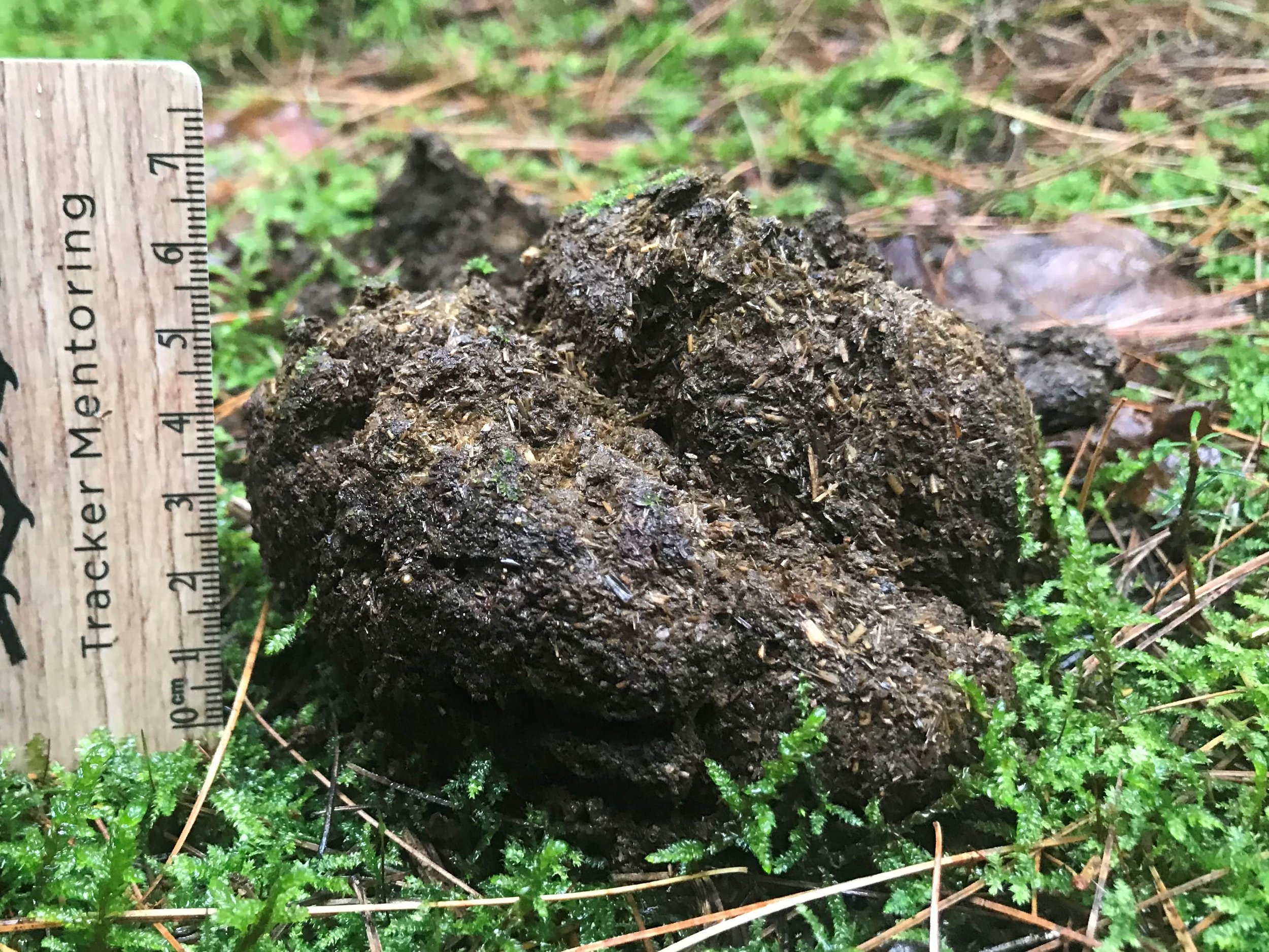
Towards A Better Understanding of Scat
Ok, so the title might be a bit provocative, but it is the best I have come up with the truly explain what I am getting at. Recently, while the tracking apprenticeship was staying at the Wildlife Research Station in Algonquin Park, we encountered some scat from a few different mammals. The questions kept coming as to the contents, the diets, and the bodies which formed and shaped the scat. I want to explore some mammalian scat a little bit more with this blog post and try and understand what clues the poop might hold to the different physiologies of a few of the species whose scat we encountered.
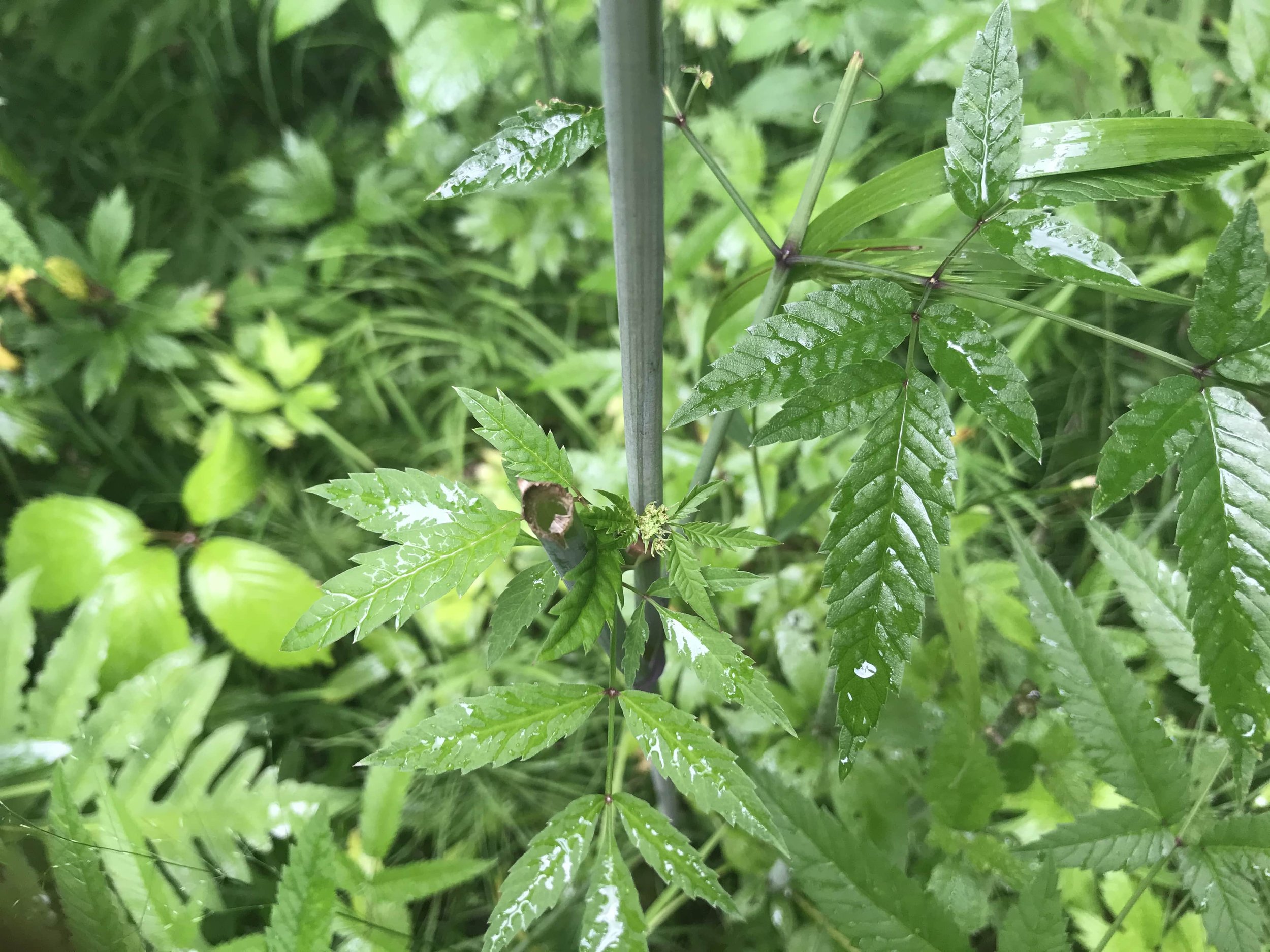
White-tailed Deer consuming Water Hemlock
White-tailed Deer consume a lot of different things. It seems everytime I see some Deer browse, it appears to be a new forb, shrub, or tree which I hadn’t seen a Deer browse before. I wanted to look into the foods which Deer browse more generally, but also focus on a new discovery of Deer browse on the aerial parts of Water Hemlock.
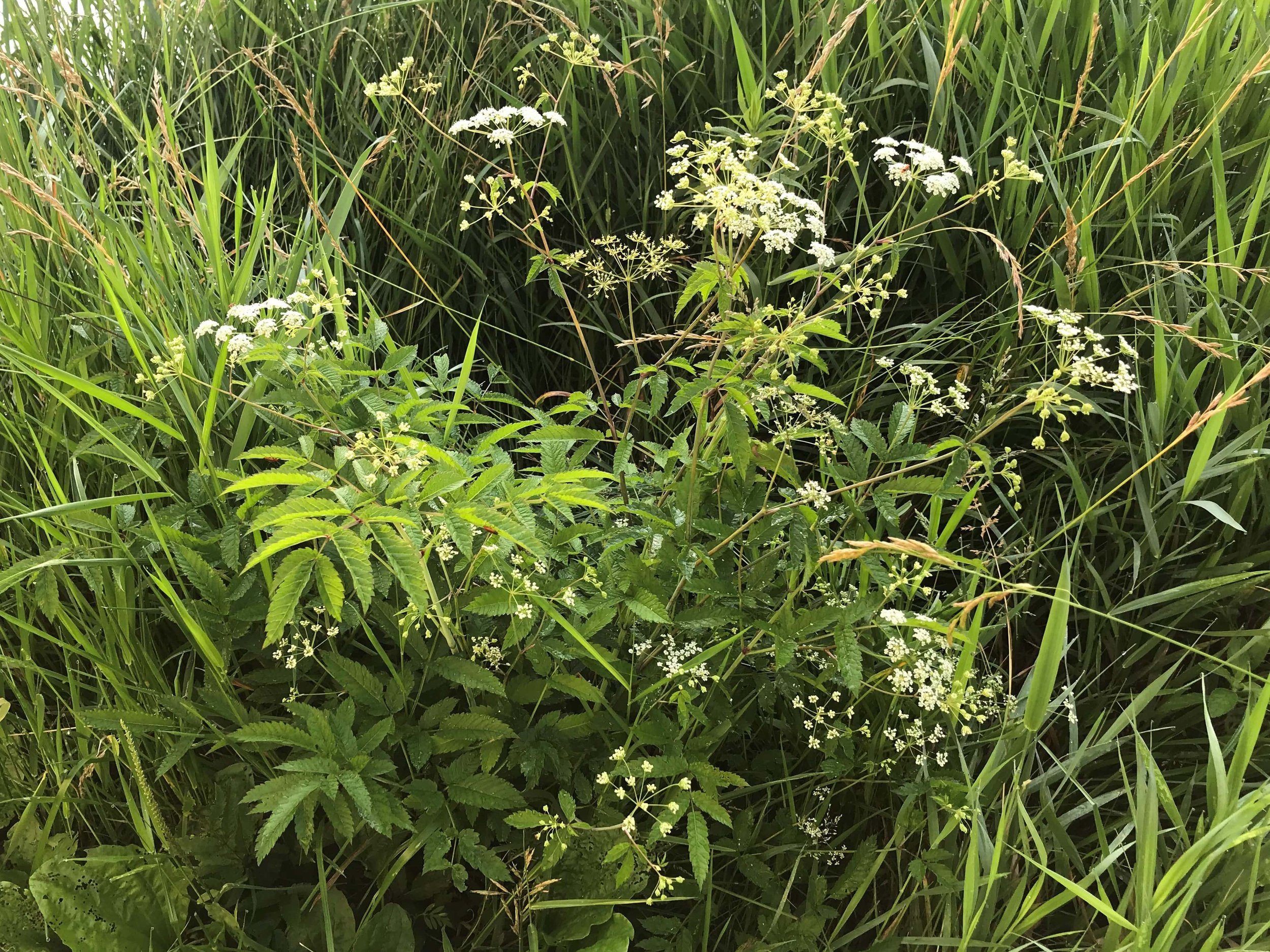
Exploring Water Hemlock
I have had a long curiosity regarding Water Hemlock ever since I had heard of it. Perhaps the most toxic plant on Turtle Island/North America. Of course I would be enamoured! I misidentified it for a couple of years thinking I knew who they were, but it wasn’t until the past four or five years that I began taking a closer look, seeking them out, learning the lore, and reading the sometimes sparse literature on the plant. This post is an effort to collect my thoughts and learning, along with a couple of good photographs.
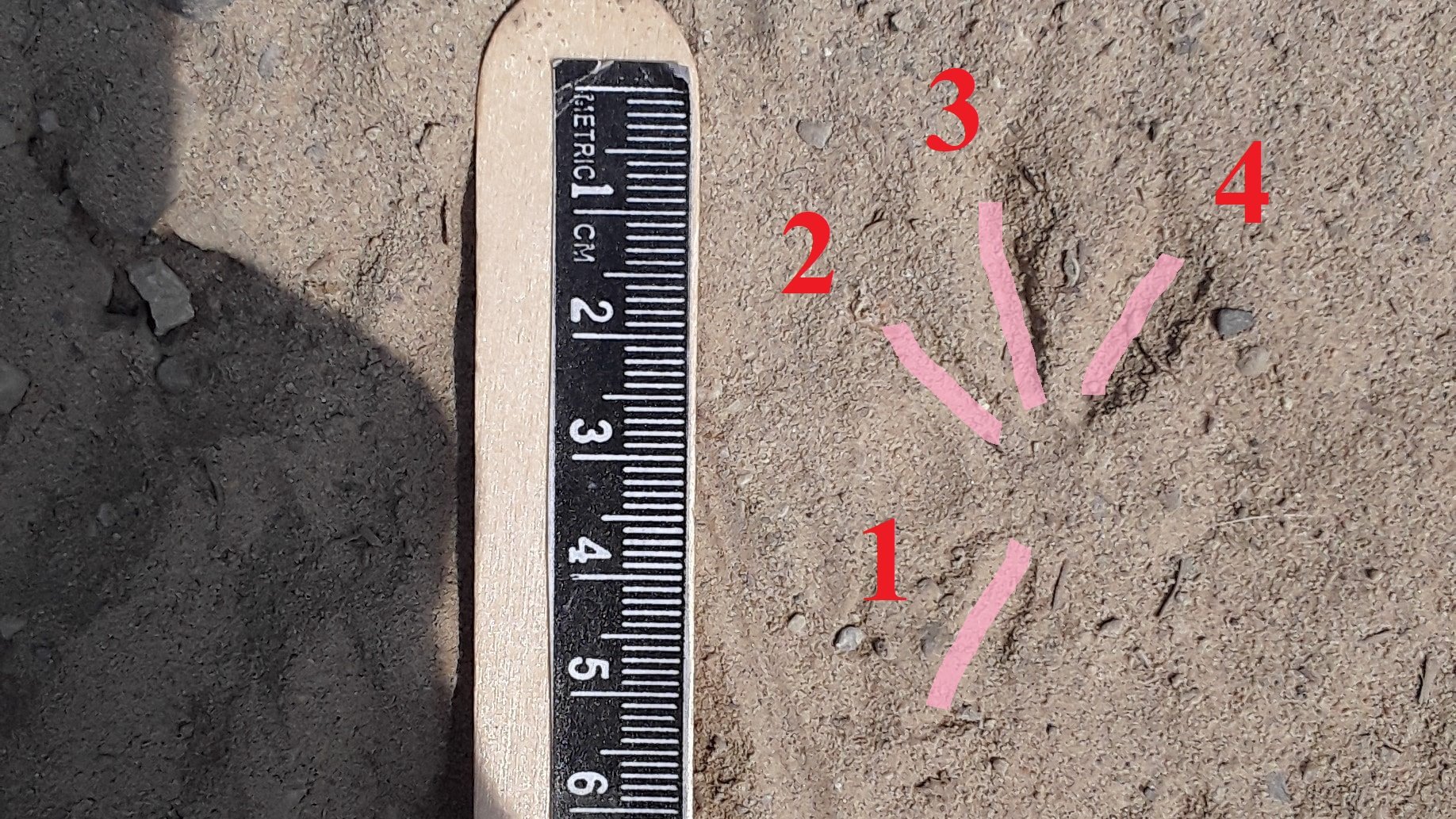
Tracking Birds At Saugeen First Nations, 2023.06.10
We parked and got out of the vehicles after a long drive and took to the sand right away to find some good tracks. While we did discuss some Red Fox and some Coyote tracks and gait patterns, I was really looking forward to finding some bird tracks. I was eager for the beach but James called me over to show me a track he’d found. It was from a bird! This was a great start to our day together as I came with the intention of tracking birds and we were only about four metres away from the cars. We got down to check it out.
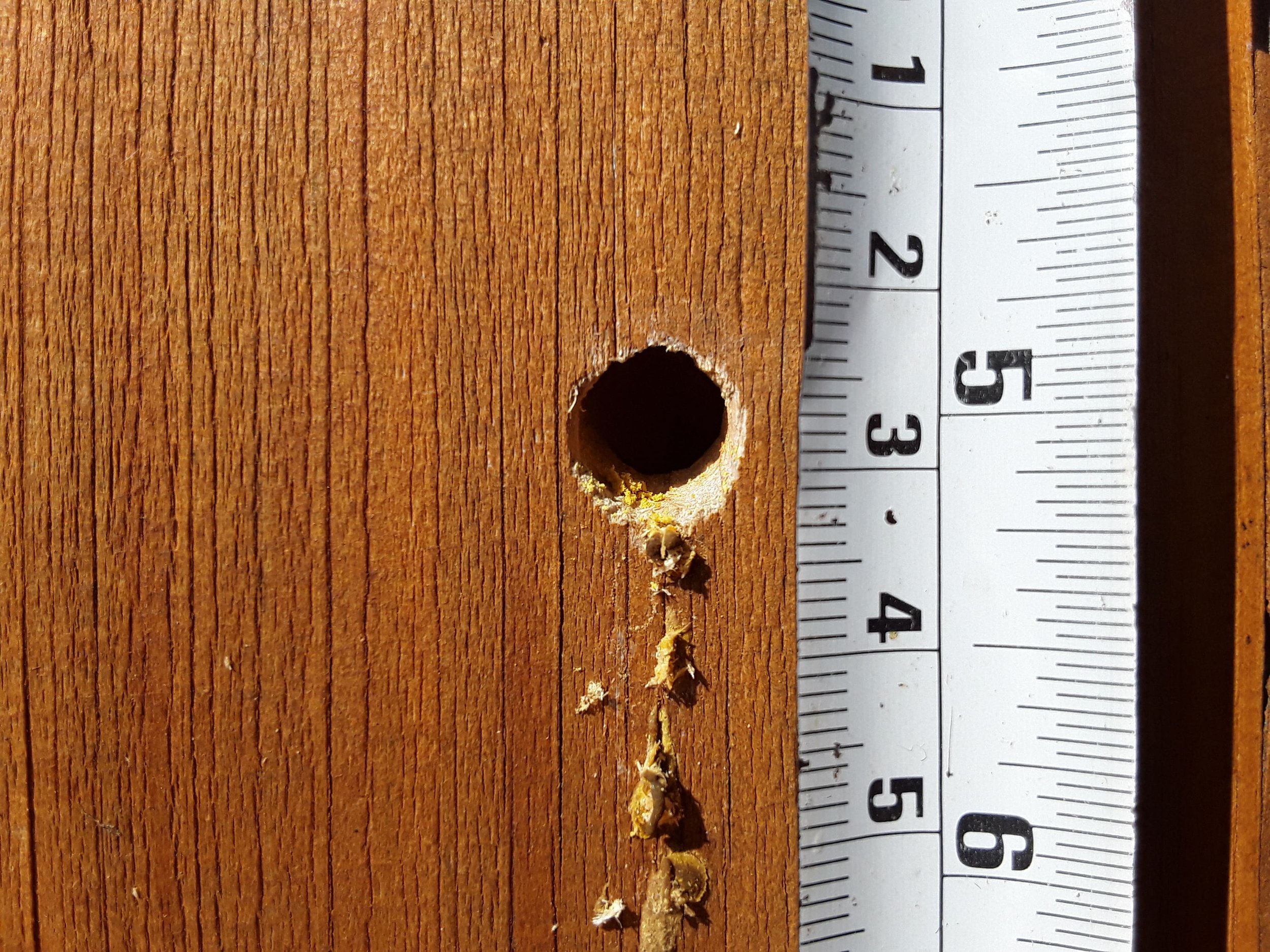
Tracking Walkabout, 2023.05.29
A couple nights ago, right before recording my radio show, a friend called and asked about some hole in the side of his walled in porch/anteroom/whatever thing. He even sent some photos. While we were on the phone, something flew past him and he described it with excitement.. It was like a big bee or something but it was shiny. I knew right off who it was.
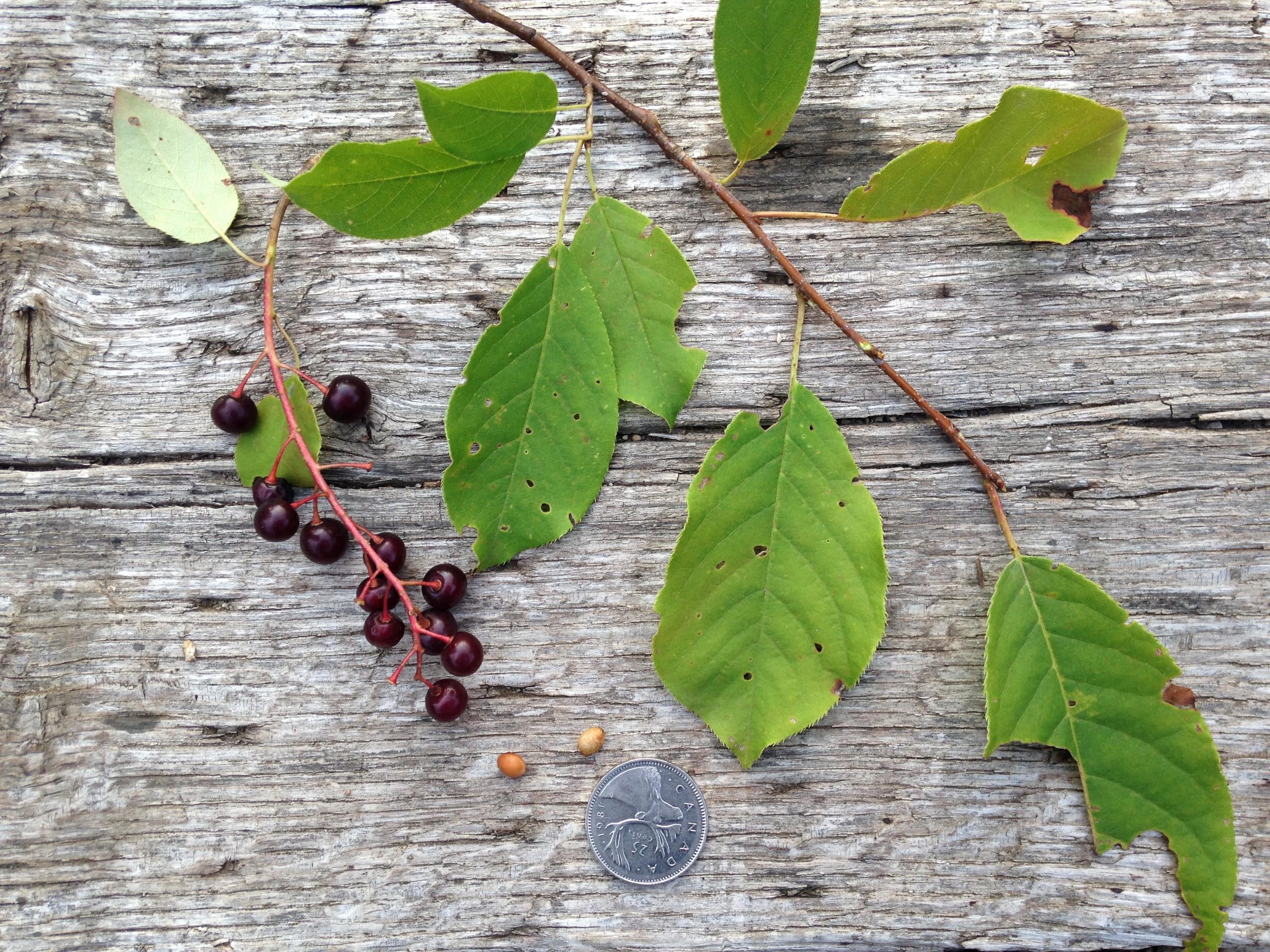
Considering Chokecherries
In an older blog post I mentioned that I had been watching a specific Chokecherry or the Anishnaabemowin name asasawemin, where I was looking at Eastern Tent Caterpillar egg masses and how the caterpillars had emerged. I ended up taking a closer look at the Chokecherry in the days following as my interest had been piqued.
Chokecherry is a role model. How can we be in good relationship with so many different life forms, transform degraded and barren anthropogenic landscapes in preparation for new life? Yes, there is a note of caution to be had, an awareness of potential hazards, but the overall theme of this shrub appears to be regeneration, repair and creating spaces for life to flourish again.
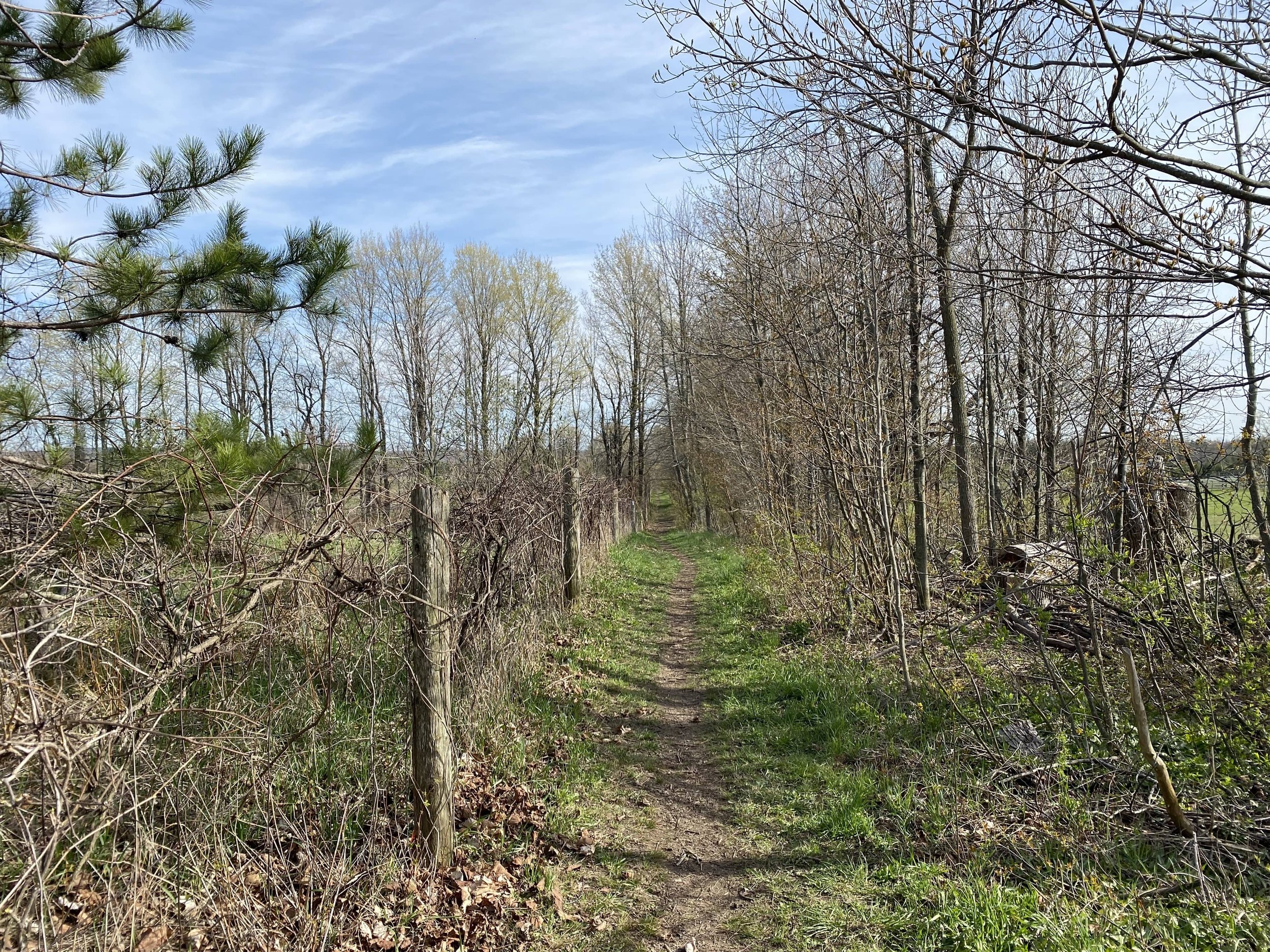
The Spring Birds of Dunby Rd
For our first day of the 2023-2024 Earthtracks Wildlife Tracking Apprenticeship we all gathered at Dunby rd to explore the tracks and sign of wildlife along, and adjacent to, the Bruce Trail. While we encountered much more than birds, I wanted to write a bit of a report back on some of the sign of the birds along the trail as I am trying to focus on learning more about bird track and sign this year. This includes feathers, nests, eggs, scat, pellets, dust baths, kill sites, tracks, feeding sign, etc., etc. For this outing it all started with song.

Eastern Tent Caterpillar Egg Masses
We were in the midst of a mock evaluation at Mono Cliffs provincial park, making our way slowly through an old orchard which had been left to rewild, when Tamara called our evaluator Alexis over to ask if she could suggest a question for the evaluation. Only thing I heard from their quick conversation was “this will be a hard one”. They directed our attention to the end of an Apple branch where a small jeweled formation wrapped around a thin twig, like a bangle or elaborate armband. This broad ring or twig-band, about 3 cm long, seemed to be made up of smaller gemlike circles of gold lacquered together. These smaller circles were about .6 mm in diameter and tightly packed together. There could’ve been 200 of the small gold circles wrapped in this small shiny bundle. I made a guess right away that it must be an egg mass, but I didn’t know who made it. It was mysterious to me. I wrote out my answer and shared it with Tamara and waited for the big reveal.
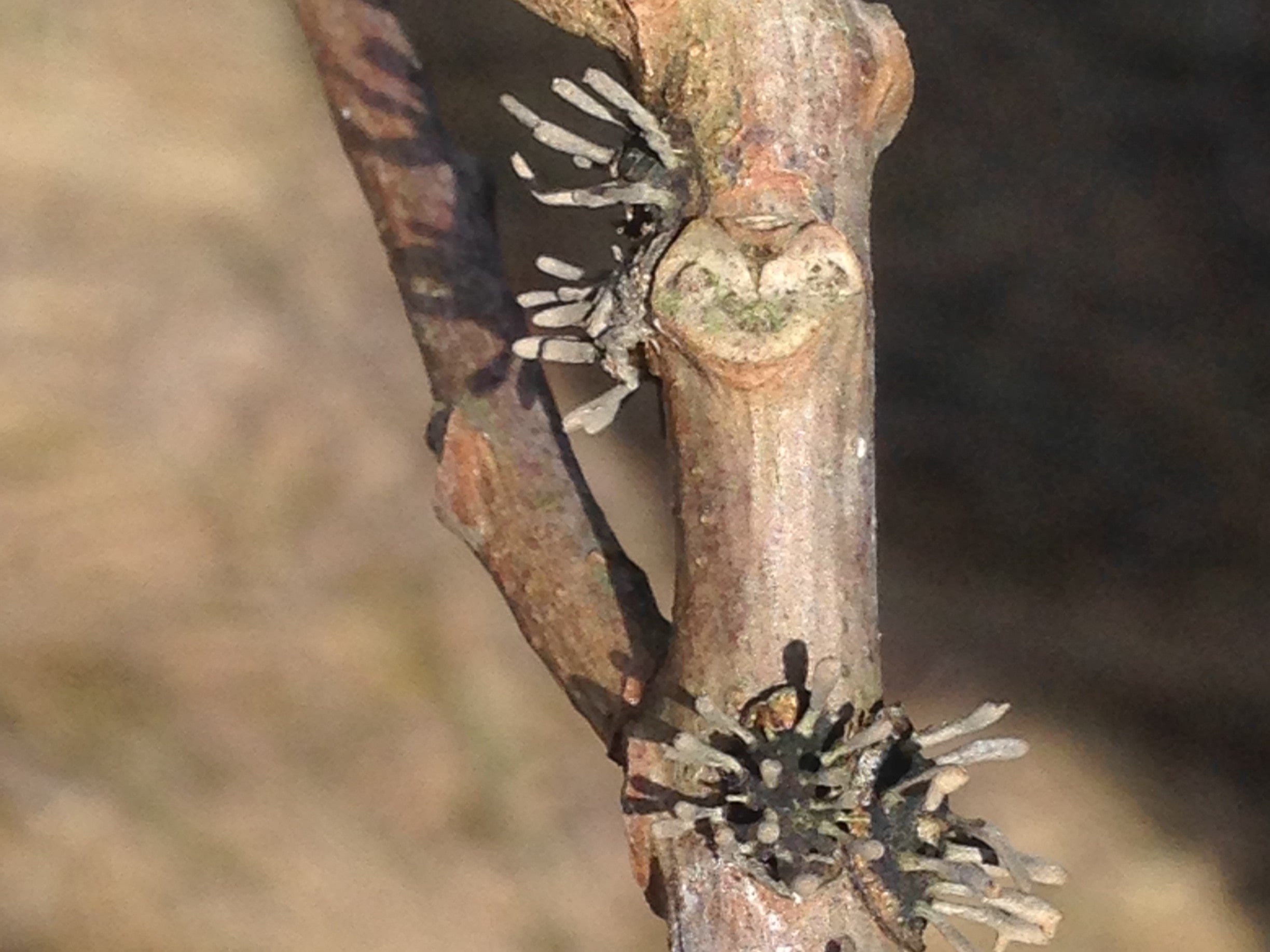
Fungi on Black Walnut
I was out with the Learn The Land class at Arkell Springs the other day where we were looking at some trees and shrubs in their winter attire, when we came across a Black Walnut with a strange looking growth coming out of one of the twigs. We wondered about it for a while and then moved on. My partner and I ended up going back the following day to investigate some more.
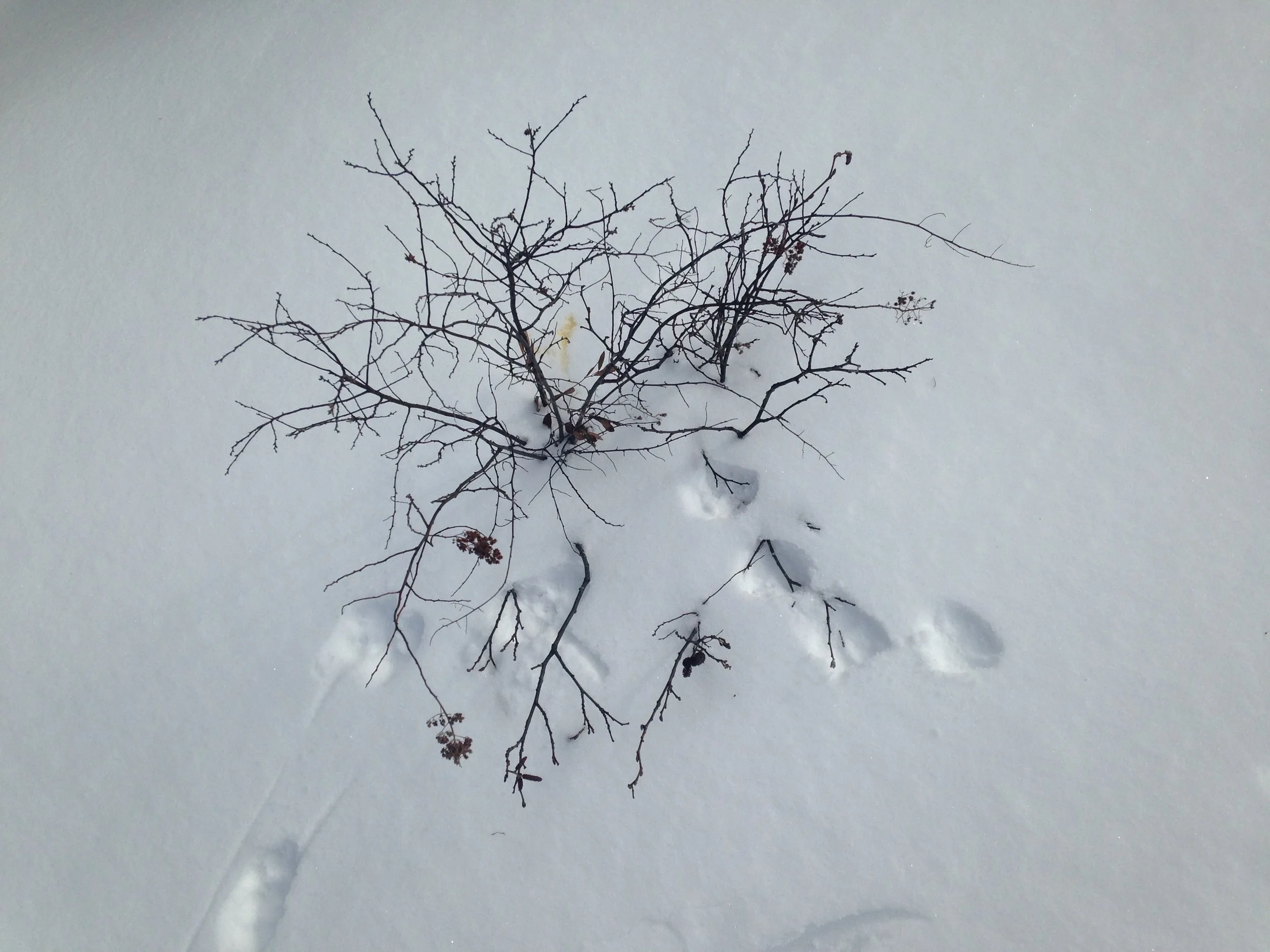
Are There Dangers In Smelling Red Fox Urine?
Recently, while trailing in Algonquin Park with the Earth Tracks Wildlife Tracking Apprenticeship some of us bent down on different occasions to smell Algonquin Wolf, Red Fox, and River Otter scent marks, which were usually small deposits of urine placed in a prominent spot along the animal’s trail. When we got back to the Wildlife Research Station which was our home base for the weekend, we got to talking about safety around sniffing animal urine when trailing.
Personally, I have smelled animal urine literally hundreds of times. Nearly every time I see a urine deposit on an animal trail, aside from Human (Homo sapiens) and other domestic animals, I get down and sniff. But the questions got me reflecting; When tracking or trailing an animal, are there dangers in smelling animal urine?

Identifying an unknown Shrew
A parent of one of the kids at the school where I work wrote to me recently, sharing some photos of a dead Shrew she had found at one of my favorite places near to where I live. She guessed it could be a Pygmy Shrew and asked what I thought. I decided to try and figure it out.

Necrophila americana
Necrophila americana. This phrase isn’t a comment on the extinction culture of the North American colonial project, but instead it is the scientific name of a species within my favorite crew of insects : Carrion Beetles! The simple and concise common name of the particular species highlighted in this post is the American Carrion Beetle. Pretty easy to remember and pronounce. I love these little dudes.

Learn The Land at Bishop Mac
On a recent Sunday I was out behind Bishop Mac High School with one of the classes I facilitate with my colleague Annie. The program is called Learn The Land, and it’s a ton of fun. Together we have been exploring three different locations around Guelph over the past year and getting to know the local ecology (and so much more). When it comes to Bishop Mac, or the South End Community Park, we had been there a couple of times in the past year, though both previous times were in the warmer months. We’ve observed the Osprey nests, and went on a birding adventure but this was our first time out in the Winter months. Sadly there was no snow, but that didn’t mean we didn’t find anything to really dig into.

Examining Coyote Courting Behaviours : Tracking at Bell’s Lake
On Saturday we met up to go tracking with the apprenticeship crew. Marcus and I pulled up I noted the trail along the middle of the road, between the tire tracks, where it looked like some sort of canid had been walking along. The folks who were already there had already noticed this trail and were exploring other trails as well. As everyone arrived we circled up and then decided to follow the trail into the woods and see what else we could figure out.
What began as a wonder, ended as a joyful celebration of the possibility of romance and new life. All from following a couple of Coyotes.
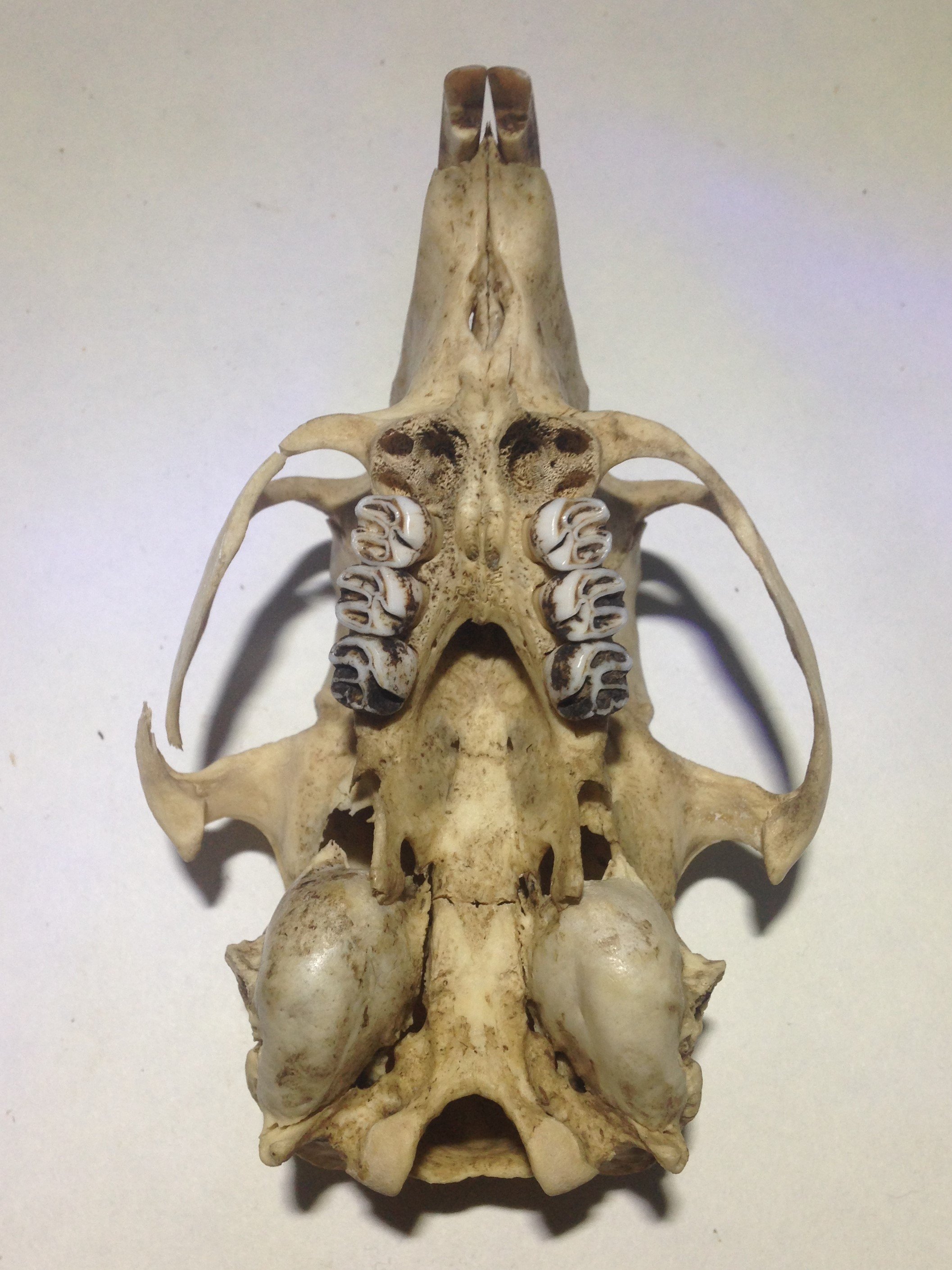
A Basic Guide to Non-Human Mammal Dentition
I am so grateful to have a partner who is willing to sift through my writing and show me things I have overlooked or left out. One of the things that was pointed out to me recently was that in a previous post I assume that folks know what I am talking about in regards to dental formula of Red Foxes and Coyotes. I knew I was bored of writing in the last one and didn’t want to side track too much, so I decided I would write a quick introduction to the teeth of mammals.
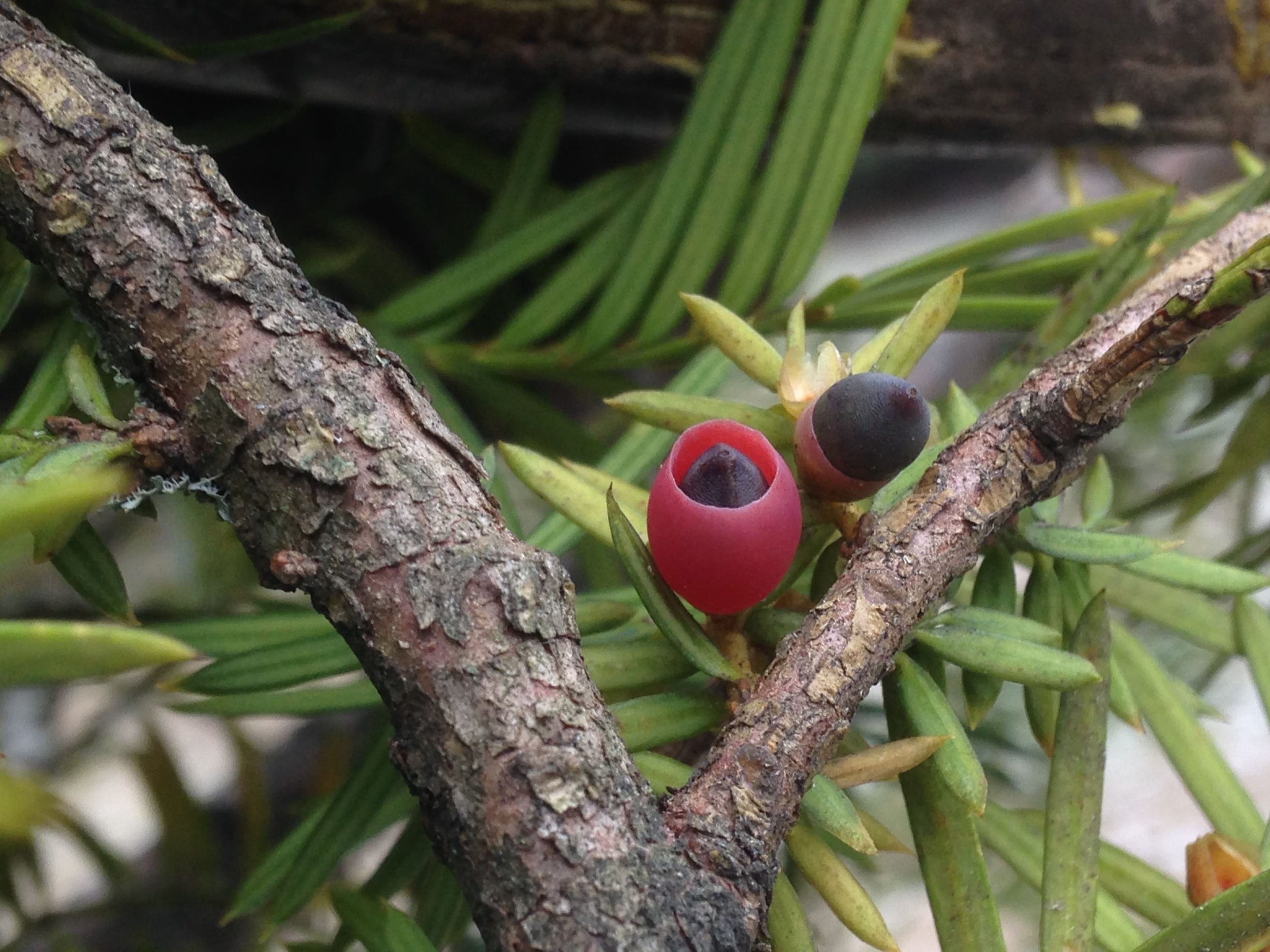
Death and Taxus?
A very brief exploration into Canada Yew and their deadly effects, especially on domesticated mammals.

What’s Up With The Ice Crystals On The Path?
It happens every year in the forest where I work. The Eastern White Cedar leaves which litter the ground are lifted away from the trail by strange columnar ice formations. The ice crystals, reminded me of Superman’s “Fortress of Solitude” but I just wasn’t sure what was going on? I had to look it up.
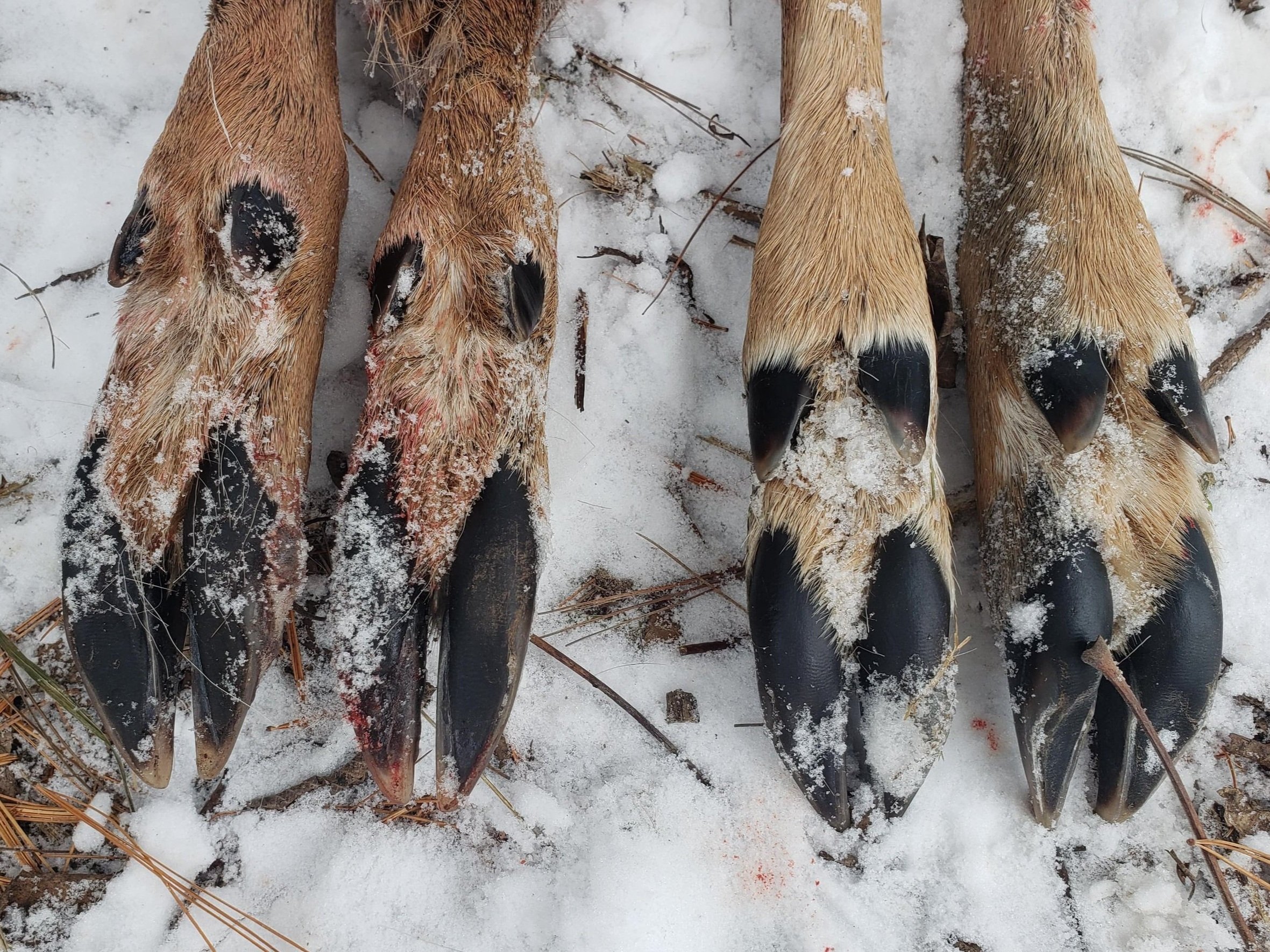
What The Toes Show - A question of deer hooves
For the past four years there has been a bit of a conundrum at the tracking apprenticeship. There has been a theory passed around to be argued and analyzed, challenged and sustained. It has confronted, confused, and confounded many of us who have tried to scry a little more understanding from a couple of seemingly basic teachings, all from the hooves of White-tailed Deer.

Determining The Difference Between Red Fox and Eastern Coyote Skulls
Today I went out to track White-tailed Deer and anyone else I might encounter. I went to the swampy Eastern White Cedar woodlands where I found a beautiful pair of antlers a couple of years ago in hopes that while out tracking the Deer I might come across another antler. Instead, when I walked into the low thickety edge of the darker Cedar woods, I found some bones and eventually a skull.

Camo As Flagging for Place-based Affinities
We all wear camouflage. We clothes ourselves in the fashions of our cultures, of our workplaces and of our identities. I clothe myself in the colours of the Cedar forest where I work and wander, or the dolostone outcroppings where I look for tracks. I am not only wearing the colours, but often the images of Oak leaves, old bark, twigs and grasses. I wear the deep layered images of the land as ceremony and as camouflage.
